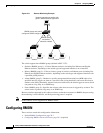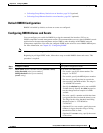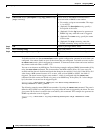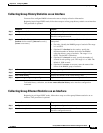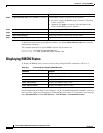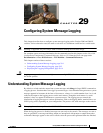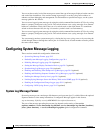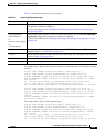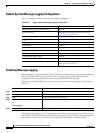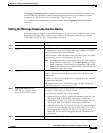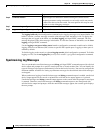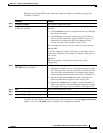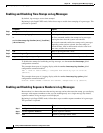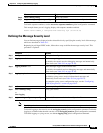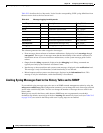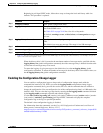
29-4
Catalyst 2960 and 2960-S Switch Software Configuration Guide
OL-8603-09
Chapter 29 Configuring System Message Logging
Configuring System Message Logging
Default System Message Logging Configuration
Table 29-2 shows the default system message logging configuration.
Disabling Message Logging
Message logging is enabled by default. It must be enabled to send messages to any destination other than
the console. When enabled, log messages are sent to a logging process, which logs messages to
designated locations asynchronously to the processes that generated the messages.
Beginning in privileged EXEC mode, follow these steps to disable message logging. This procedure is
optional.
Disabling the logging process can slow down the switch because a process must wait until the messages
are written to the console before continuing. When the logging process is disabled, messages appear on
the console as soon as they are produced, often appearing in the middle of command output.
Table 29-2 Default System Message Logging Configuration
Feature Default Setting
System message logging to the console Enabled.
Console severity Debugging (and numerically lower levels; see
Table 29-3 on page 29-10).
Logging file configuration No filename specified.
Logging buffer size 4096 bytes.
Logging history size 1 message.
Time stamps Disabled.
Synchronous logging Disabled.
Logging server Disabled.
Syslog server IP address None configured.
Configuration change logger Disabled
Server facility Local7 (see Table 29-4 on page 29-14).
Server severity Informational (and numerically lower levels; see
Table 29-3 on page 29-10).
Command Purpose
Step 1
configure terminal Enter global configuration mode.
Step 2
no logging console Disable message logging.
Step 3
end Return to privileged EXEC mode.
Step 4
show running-config
or
show logging
Verify your entries.
Step 5
copy running-config startup-config (Optional) Save your entries in the configuration file.



